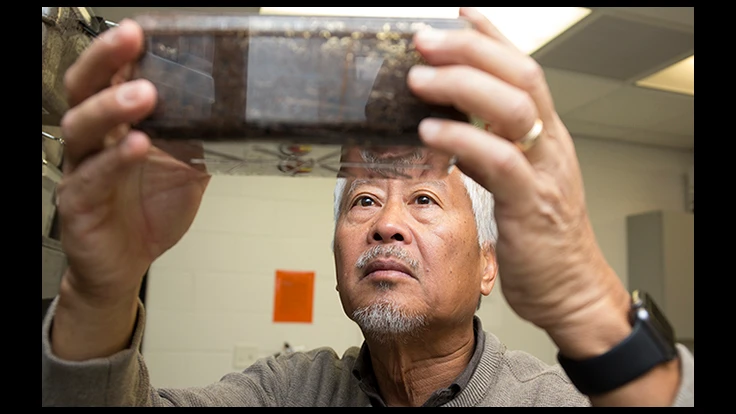
GAINESVILLE, Fla. --- Figure this: Asian and Formosan subterranean termites cause about $32 billion in damage annually, worldwide, when you combine harm to structures and measures to control them. Now, University of Florida Institute of Food and Agricultural Sciences researchers predict these pests will dramatically increase their impact in the next two decades in South Florida and possibly across the nation.
In fact, UF/IFAS entomologists estimate subterranean termite activity will expand, meaning half the structures in South Florida will be at risk of infestation by subterranean termites by 2040.
Assistant Researcher Thomas Chouvenc, Distinguished Professor Nan-Yao Su and Professor Rudy Scheffrahn will publish their new study in June in the journal Florida Entomologist.
Six invasive termite species are now established in Florida, and among these, the Formosan subterranean termite, the Asian subterranean termite and the West Indian drywood termite pose particular concern for residents and the pest-control industry because they cause most of the structural damage.
Asian and Formosan subterranean termites contribute in large part to the cost associated with termite damage and control globally, the study says. The Miami-Fort Lauderdale area, with about 6 million residents, represents the only location in the continental U.S. where the distribution of Asian and Formosan termites overlap. Asian subterranean termites stick to South Florida, venturing north only as far as Palm Beach County, but the Formosan termites go from Key West to Charleston, South Carolina, Chouvenc said.
For their study, Chouvenc, Su and Scheffrahn estimated the geographic spread of both termite invaders in South Florida, using records of specimens collected between 1985 and 2015 at the UF Termite Collection at the UF/IFAS Fort Lauderdale Research and Education Center. For each year of the study period – 1990 to 2015 – researchers estimated that any structure within a 500-meter radius from any recorded Asian subterranean or Formosan termite would be at risk of infestation.
Since 1990, these two types of termites have expanded their range considerably in Florida because of how far they fly and because more and more people move termite-infested material. As a result, the number of infested structures has increased exponentially, Chouvenc said.
“Facing the increasing pressure of both invasive subterranean termites in South Florida, area-wide termite management programs could be implemented to provide a long-term, sustainable solution for communities,” said Chouvenc, who, along with Su and Scheffrhan, is based at the UF/IFAS Fort Lauderdale REC. Adding to their concern is that these two species may hybridize, something they documented in a study last year.
“If their activity increases, the risk for species interaction and hybridization may also increase,” Chouvenc said.
UF/IFAS recently released an interactive map at http://flrec.ifas.ufl.edu/termites-in-florida/, on which Florida residents can see the historical termite activity in their area. Monitoring for termite damage or activity is an important first step, Chouvenc said. People can send termite samples to be identified by the termite team at the Fort Lauderdale REC, to determine if structures could be damaged by the pests. For further help, South Florida has many qualified pest control companies, which can provide inspections, advice and services, he said.
Latest from Pest Control Technology
- Donny Oswalt Shares What Makes Termites a 'Tricky' Pest
- Study Finds Fecal Tests Can Reveal Active Termite Infestations
- Peachtree Pest Control Partners with Local Nonprofits to Fight Food Insecurity
- Allergy Technologies, PHA Expand ATAHC Complete Program to Protect 8,500 Homes
- Housecall Pro Hosts '25 Winter Summit Featuring Mike Rowe
- Advanced Education
- Spotted Lanternflies, BMSBs Most Problematic Invasive Pests, Poll Finds
- Ecolab Acquires Guardian Pest Solutions





